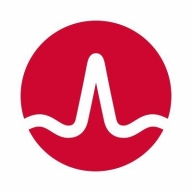

IBM Spectrum Computing and VMware Aria Operations compete in enterprise computing and operations management. IBM Spectrum Computing holds an advantage in terms of pricing and support services, while VMware Aria Operations is superior in offering comprehensive features justifying its higher cost.
Features: IBM Spectrum Computing stands out with its workload management, efficient resource utilization, and cost-effectiveness for high-performance computing environments. VMware Aria Operations excels with operational insights, automation capabilities, and advanced analytics for performance management.
Room for Improvement: IBM Spectrum Computing could enhance its advanced analytics and automation features. Integrating more complex operational insights would also be beneficial. VMware Aria Operations would benefit from simplifying its deployment process and reducing its cost complexity. Improving support for non-technical users could also be advantageous.
Ease of Deployment and Customer Service: IBM Spectrum Computing provides straightforward deployment with supportive customer service, easing setup and operations. VMware Aria Operations, while more complex to deploy, offers sophisticated analytics and automation that deliver long-term benefits, albeit with a steeper learning curve initially.
Pricing and ROI: IBM Spectrum Computing has a lower initial cost, attracting budget-conscious buyers with a strong ROI through resource optimization. VMware Aria Operations demands higher upfront investment but offers significant ROI with enhanced operations management, ideal for businesses needing extensive operational oversight.
| Product | Market Share (%) |
|---|---|
| VMware Aria Operations | 5.7% |
| IBM Spectrum Computing | 1.2% |
| Other | 93.1% |


| Company Size | Count |
|---|---|
| Small Business | 3 |
| Midsize Enterprise | 1 |
| Large Enterprise | 6 |
| Company Size | Count |
|---|---|
| Small Business | 64 |
| Midsize Enterprise | 62 |
| Large Enterprise | 278 |
IBM Spectrum Computing uses intelligent workload and policy-driven resource management to optimize resources across the data center, on premises and in the cloud. Now up to 150X faster and scalable to over 160,000 cores, IBM provides you with the latest advances in software-defined infrastructure to help you unleash the power of your distributed mission-critical high performance computing (HPC), analytics and big data applications as well as a new generation open source frameworks such as Hadoop and Spark.
VMware Aria Operations is a high-ranking virtualization management and cloud management tool that automates and simplifies IT management to the applications it supports. It achieves this through full-stack visibility from physical, virtual, and cloud infrastructure. The product allows users to enable self-driving IT operations management across private, hybrid, and multi-cloud environments. This is conducted with the unified operations platform that delivers continuous performance, capacity and cost optimization, and integrated compliance through artificial intelligence (AI) and machine learning (ML), and predictive analytics.
VMware Aria Operations Use Cases
VMware Aria Operations has several use cases, some of which include:
VMware Aria Operations Features
The product has various features which users can utilize. Several of the features that the 2022 version of VMware Aria Operations introduced include:
VMware Aria Operations Benefits
VMware Aria Operations brings various benefits to the organizations using it. Among them are the following:
Reviews from Real Users
Mohamed N., a tech lead VMware support engineer at a tech services company, appreciates VMware Aria Operations because it is easy to use, stable, and support is always available.
Mojtaba K., a senior system administrator at a comms service provider, values VMware Aria Operations due to the fact that its dashboards give you a glimpse of what is really going on in your virtualized environment.
We monitor all Cloud Management reviews to prevent fraudulent reviews and keep review quality high. We do not post reviews by company employees or direct competitors. We validate each review for authenticity via cross-reference with LinkedIn, and personal follow-up with the reviewer when necessary.